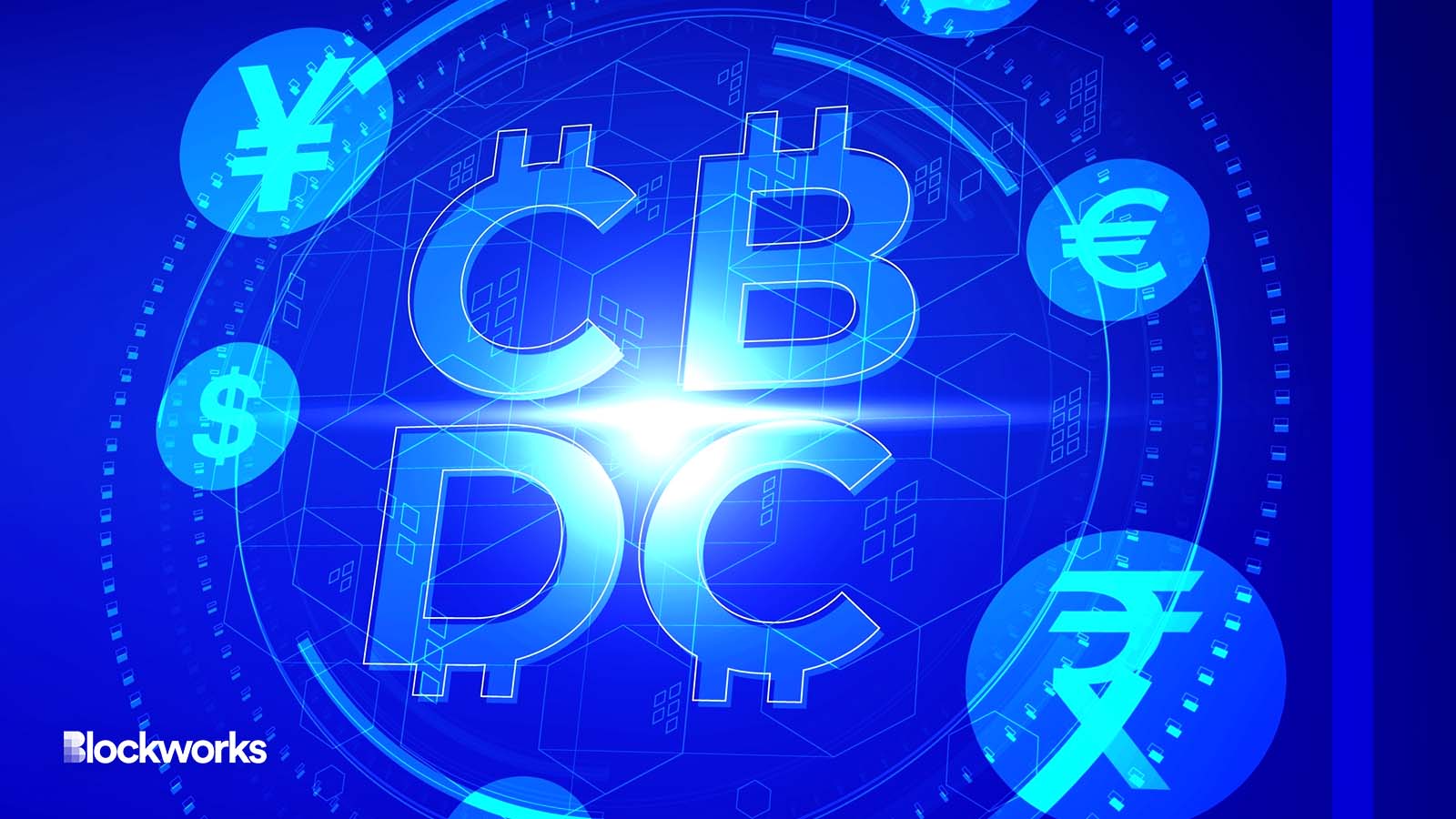Retail CBDCs Could Pose Risks Not Yet Known, IMF Head Says
The IMF is engaged with roughly 50 countries about CBDCs and has increased staff focused on digital money

WindAwake/Shutterstock modified by Blockworks
Central bank digital currencies, also called CBDCs, are the future, according to a leader at the International Monetary Fund, but certain types could pose threats that are thus far unknown.
During a Monday discussion at the Milken Institute Global Conference, Kristalina Georgieva, a managing director at the global organization, stated that the IMF can no longer overlook digital versions of countries’ fiat currencies.
“We actually rapidly increased our staff that deals with digital money, because we know this is where we are headed; it is not going to be reversed,” Georgieva said. “Before the pandemic we used to say the future is digital, and with the pandemic, the future has arrived.”
Wholesale versus retail CBDCs
Georgieva made a distinction between what she called retail CBDCs — ones that can be held and used by individuals — and wholesale CBDCs, which would be designed only for certain financial institutions.
“We think that wholesale CBDCs can be put in place with fairly little space for undesirable surprises, whereas retail CBDCs completely transform the financial system in a way that we don’t quite know what consequences it could bring,” she explained.
The comments came after an IMF report published last year called CBDCs “uncharted territory” that raises both challenges and opportunities. The report noted that information sharing between countries conducting CBDC projects will be critical.
Roughly 110 countries are in the midst of studying CBDCs or getting set to implement them, she added. The IMF is engaged in discussions with roughly 50 nations on the topic.
The Central Bank of the Bahamas launched its CBDC, called the Sand Dollar, in 2020. Some have said emerging markets economies generally are more motivated to explore such options — compared to more developed countries — based on different needs.
China also has CBDC pilots across many of the country’s provinces. Government employees in the city of Changshu are reportedly set to be paid in the country’s digital yuan starting in June.
“I can tell you that we will see a very significant transformation that comes from CBDCs, even in the US, where that was, for quite some time, a topic of not great interest,” Georgieva said. “Now there is an engagement, and for the right reason: the future has arrived.”
An executive order signed by President Biden in March 2022 called for “placing urgency” on the research and development of a US CBDC, though there are currently no formal plans to launch one.
The Federal Reserve has plans to roll out a real-time payments service, called FedNow, in July. Presidential candidate Robert Kennedy Jr. claimed FedNow could be the first step toward a CBDC.
Fed Chair Jerome Powell has said the central bank would seek approval from Congress and the government before launching any sort of digital currency.
Get the news in your inbox. Explore Blockworks newsletters:
- The Breakdown: Decoding crypto and the markets. Daily.
- Empire: Crypto news and analysis to start your day.
- Forward Guidance: The intersection of crypto, macro and policy.
- 0xResearch: Alpha directly in your inbox.
- Lightspeed: All things Solana.
- The Drop: Apps, games, memes and more.
- Supply Shock: Bitcoin, bitcoin, bitcoin.






